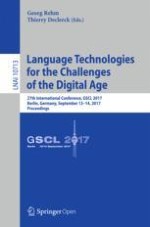
Open Access 2018 | OriginalPaper | Buchkapitel
A Comparative Study of Uncertainty Based Active Learning Strategies for General Purpose Twitter Sentiment Analysis with Deep Neural Networks
verfasst von : Nils Haldenwang, Katrin Ihler, Julian Kniephoff, Oliver Vornberger
Erschienen in: Language Technologies for the Challenges of the Digital Age
Aktivieren Sie unsere intelligente Suche, um passende Fachinhalte oder Patente zu finden.
Wählen Sie Textabschnitte aus um mit Künstlicher Intelligenz passenden Patente zu finden. powered by
Markieren Sie Textabschnitte, um KI-gestützt weitere passende Inhalte zu finden. powered by